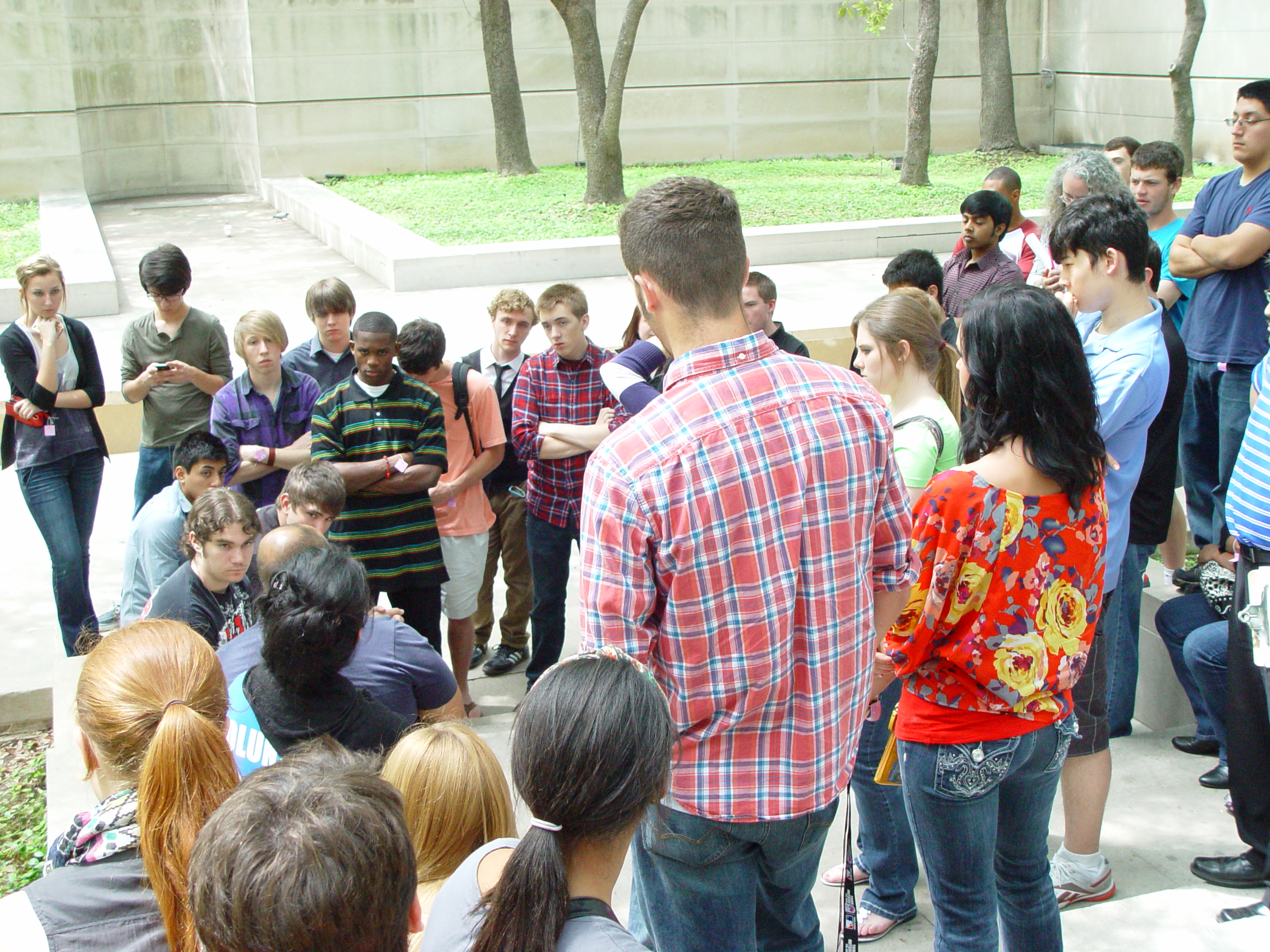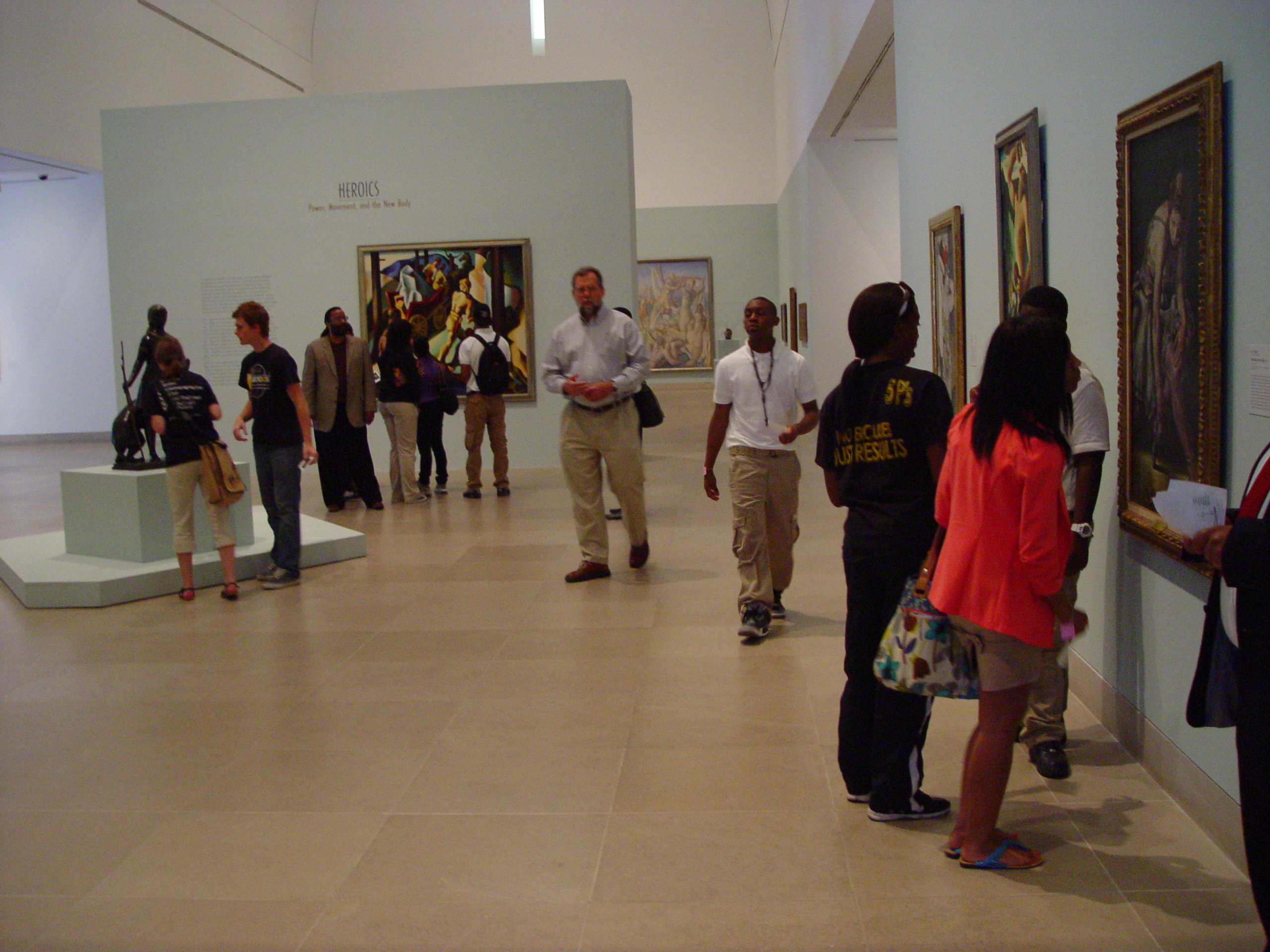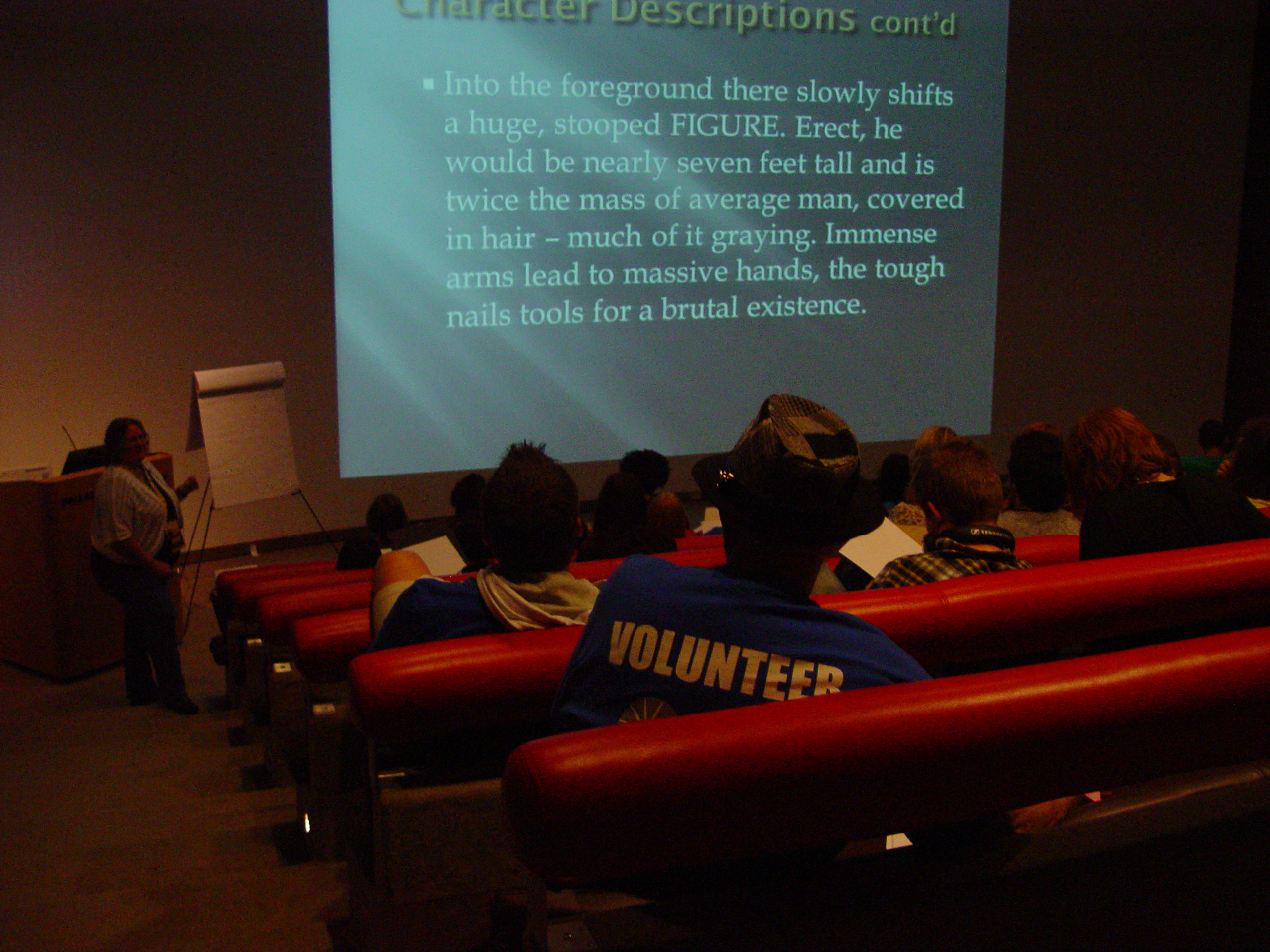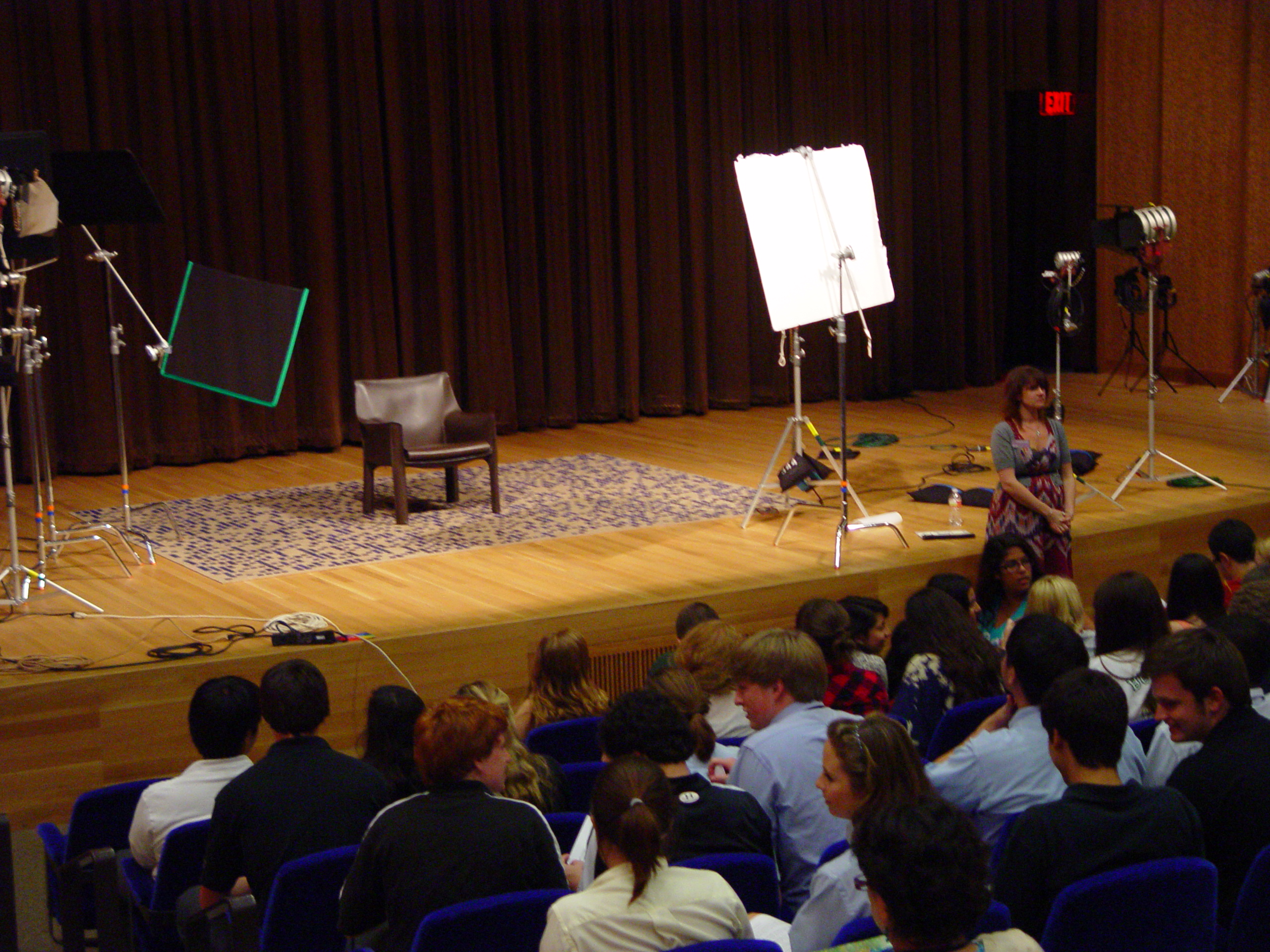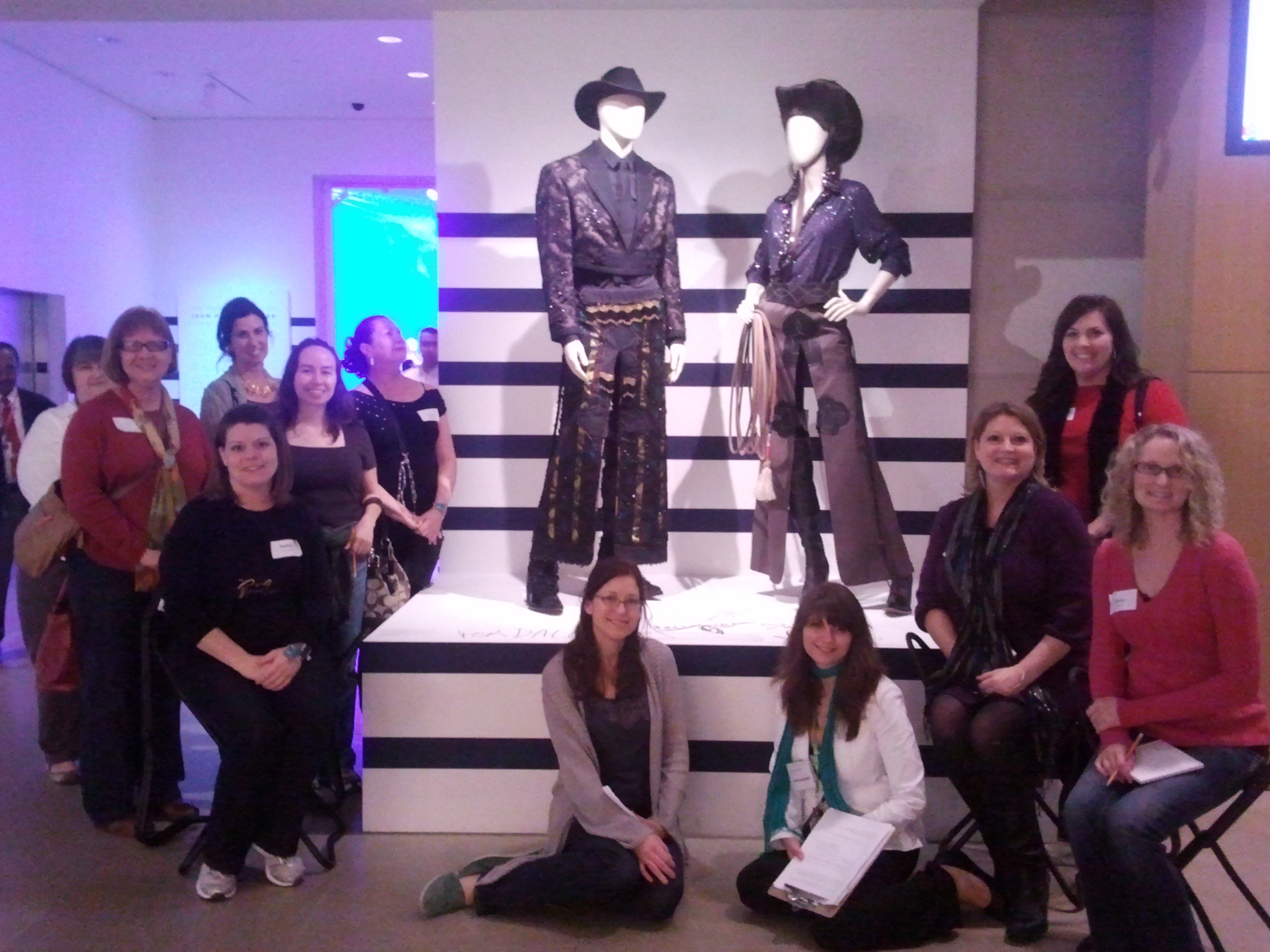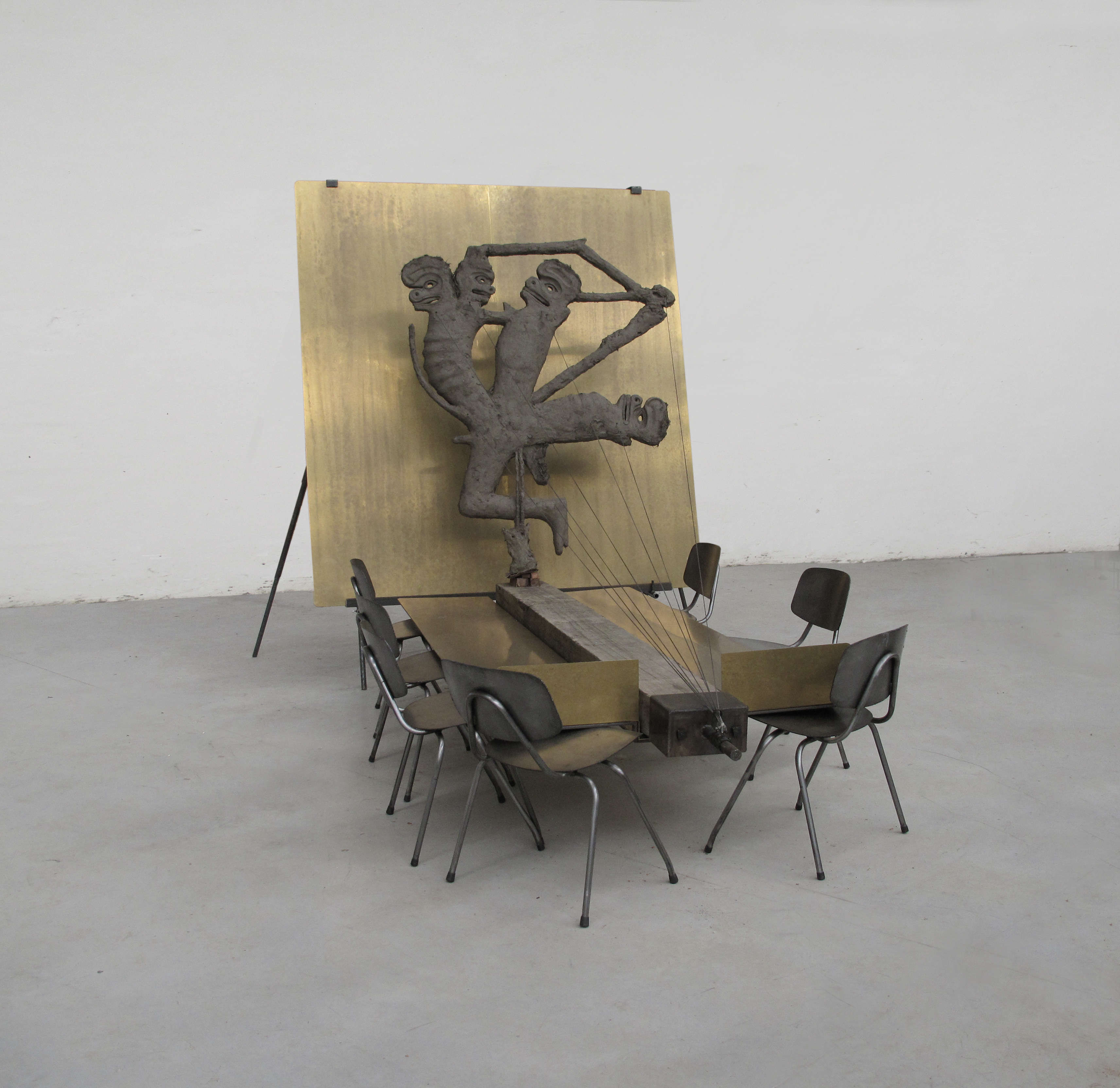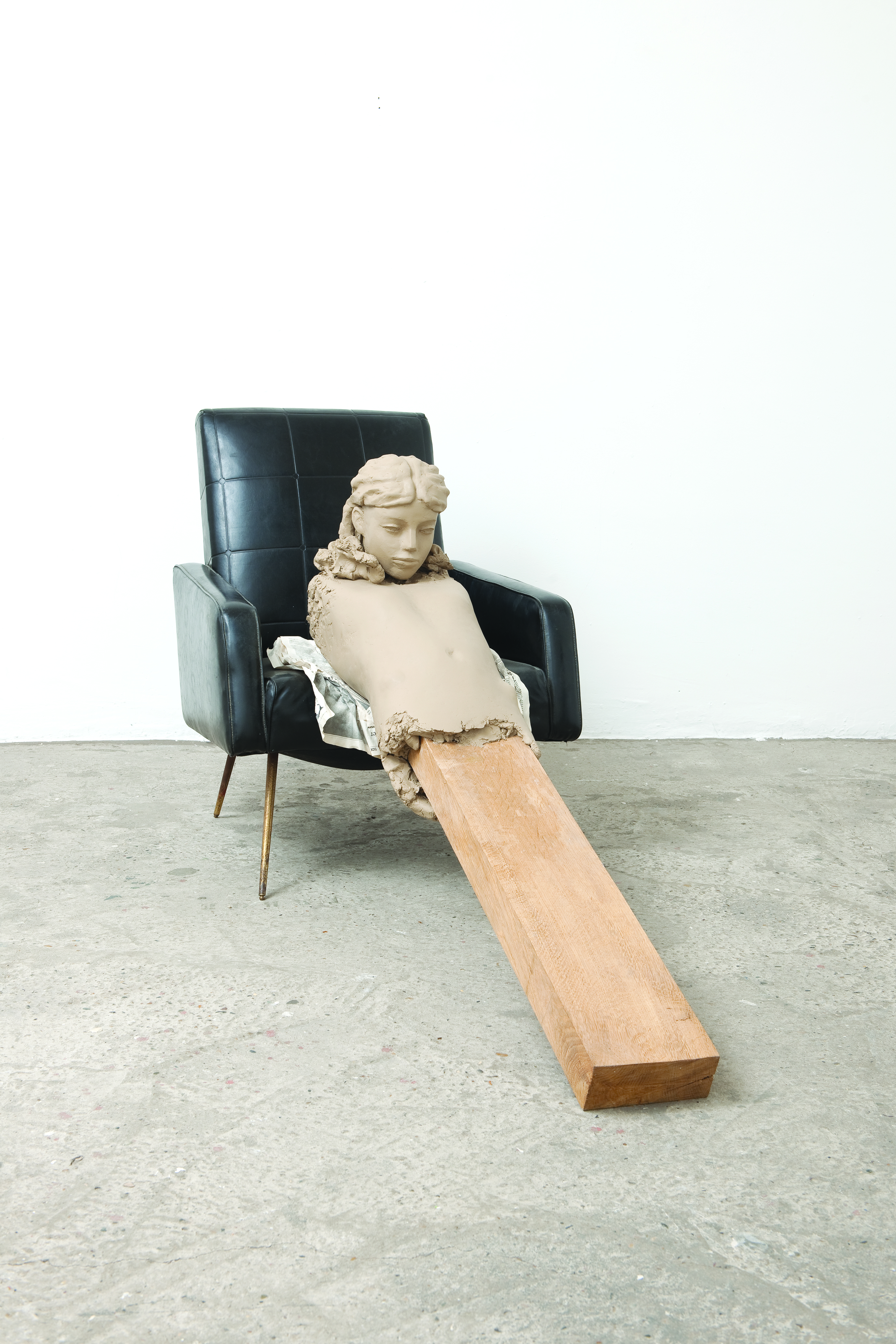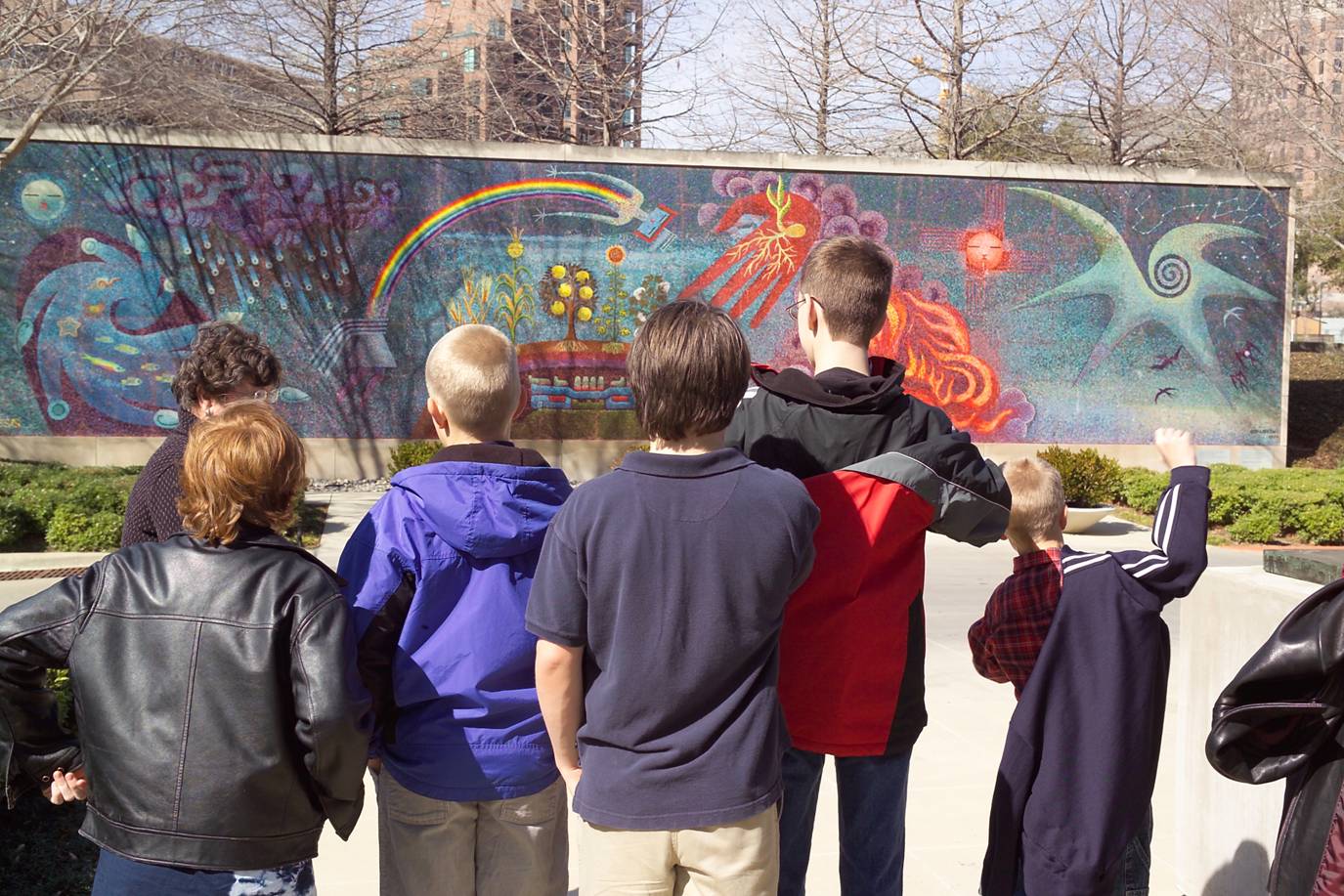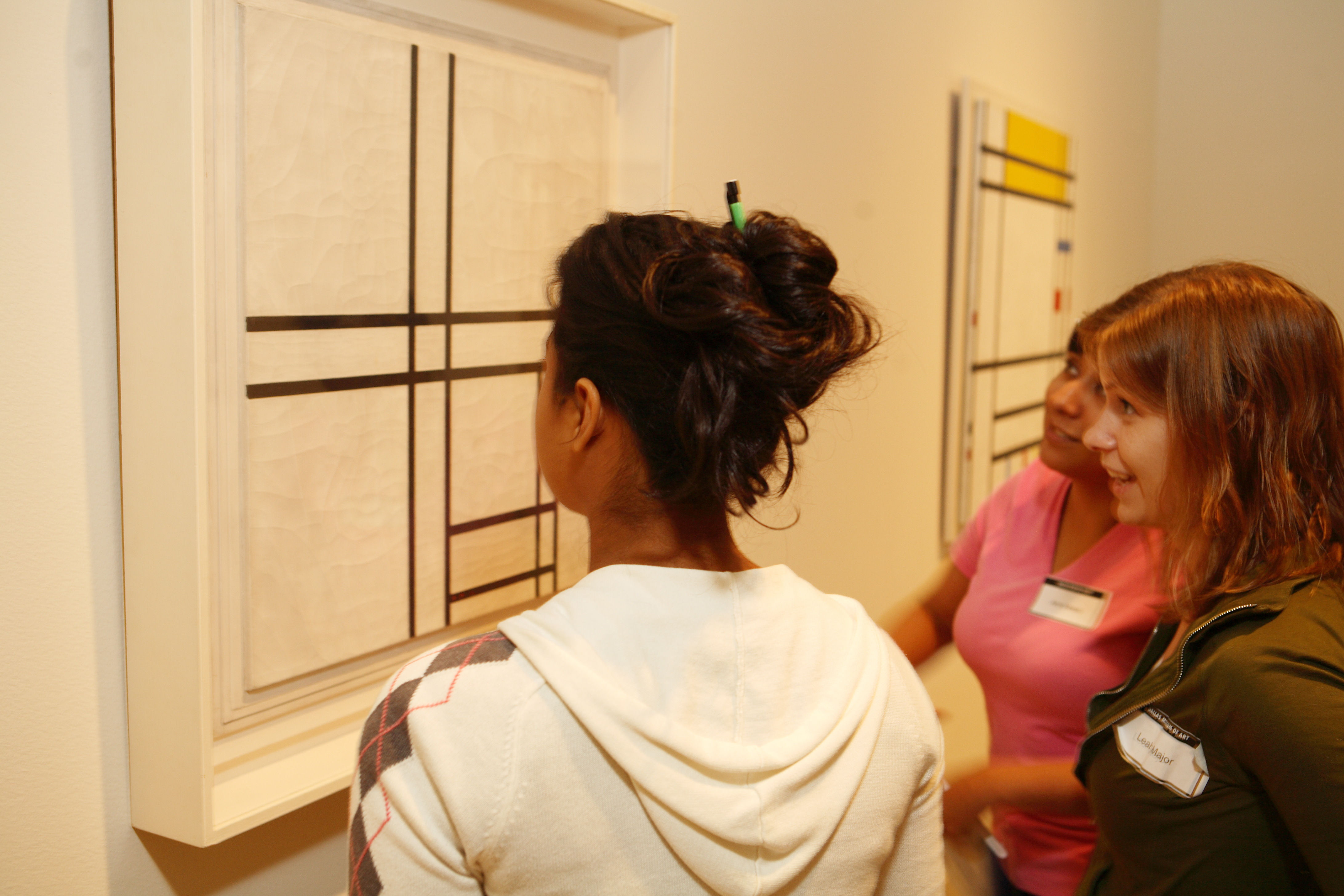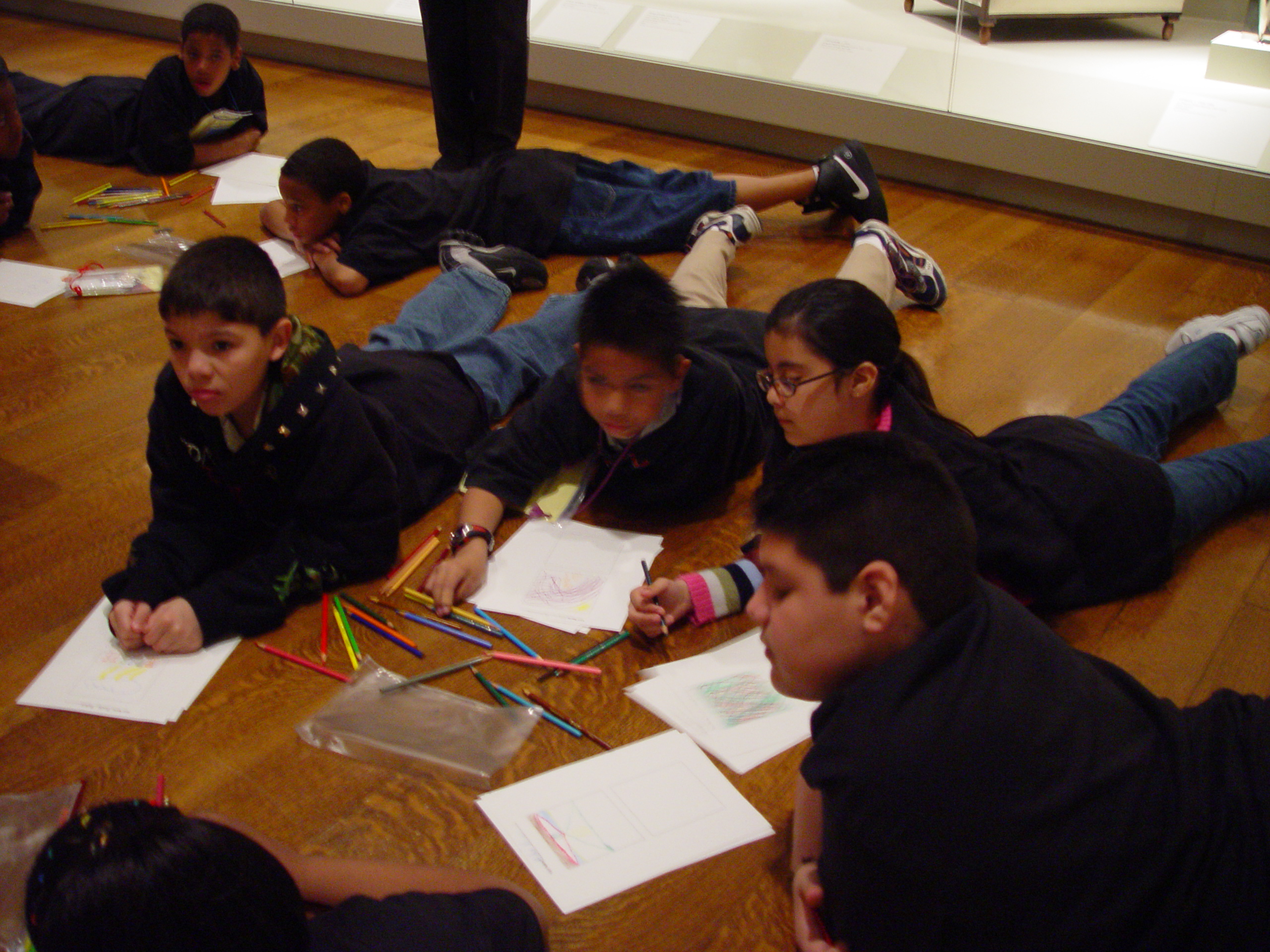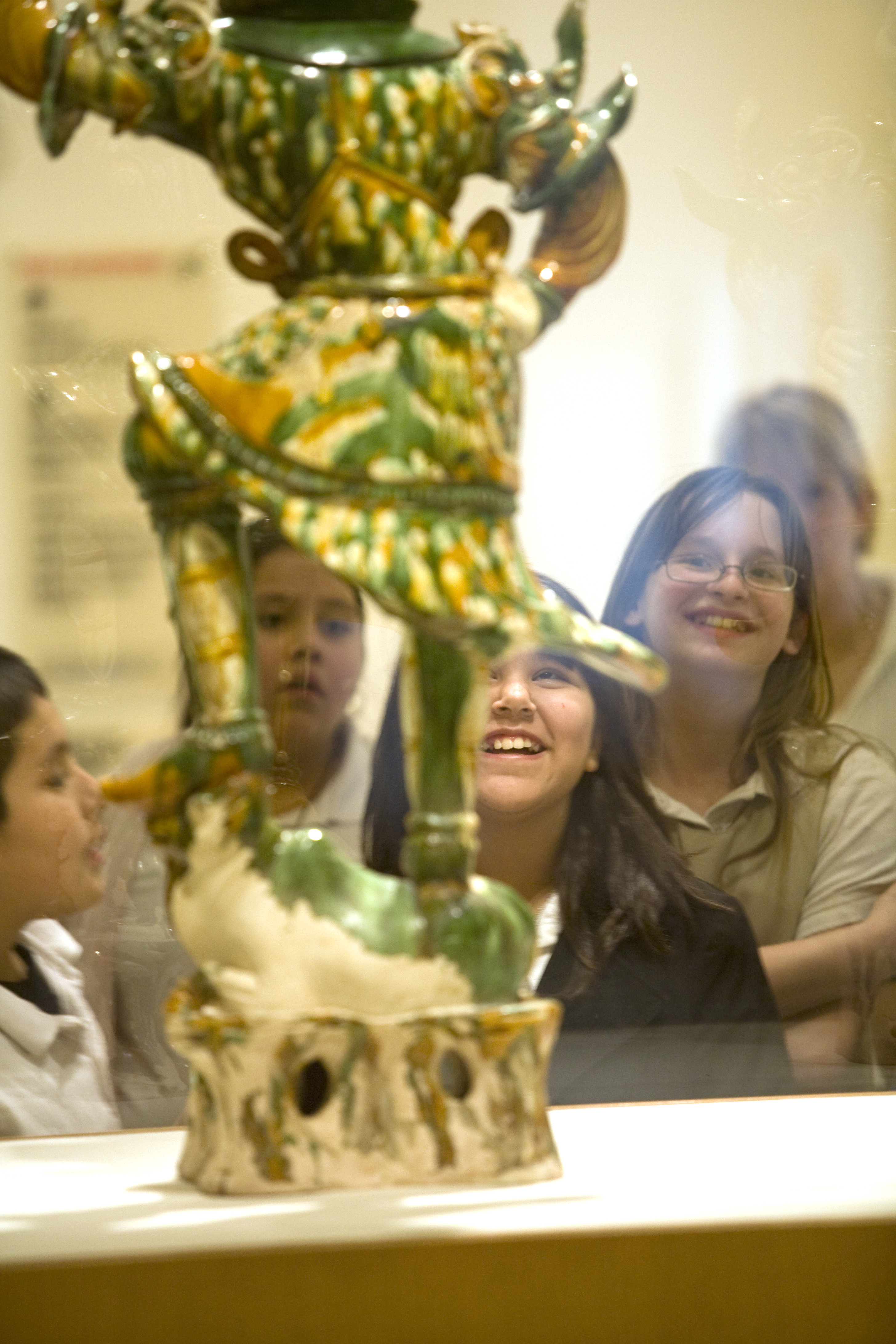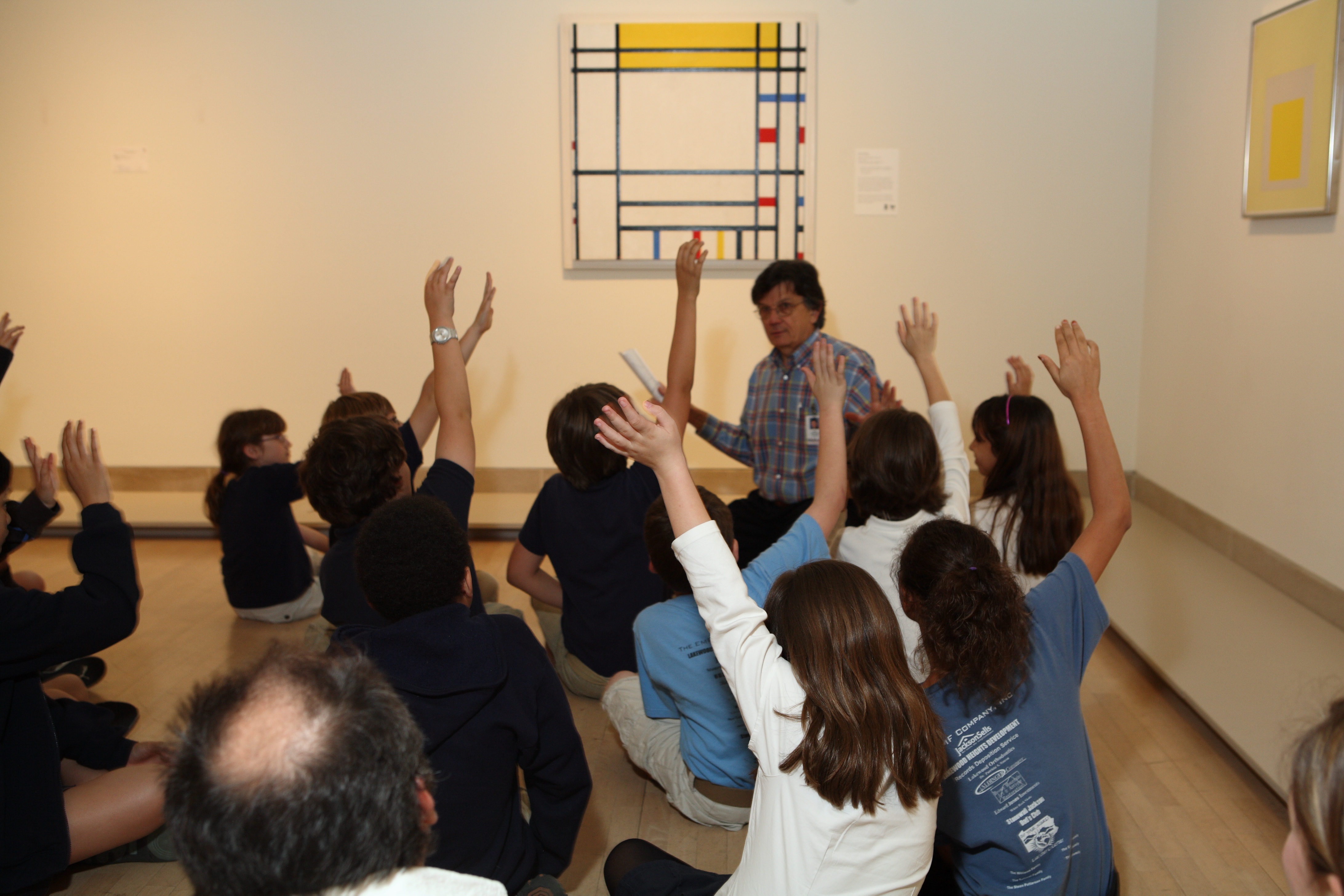A few months ago, Loryn shared her tips for making the most of a self-guided visit to the DMA. I thought I would weigh in today with a summary of what to expect when you schedule a docent-guided tour at the Museum. We offer docent-guided tours Tuesday-Friday at 10:00 a.m., 11:00 a.m., 12:00 p.m., and 1:00 p.m., and all requests for docent-guided tours must be submitted at least three weeks in advance.
Let’s say you’ve submitted your request and received your confirmation letter from Loryn. What happens once you actually arrive at the DMA?
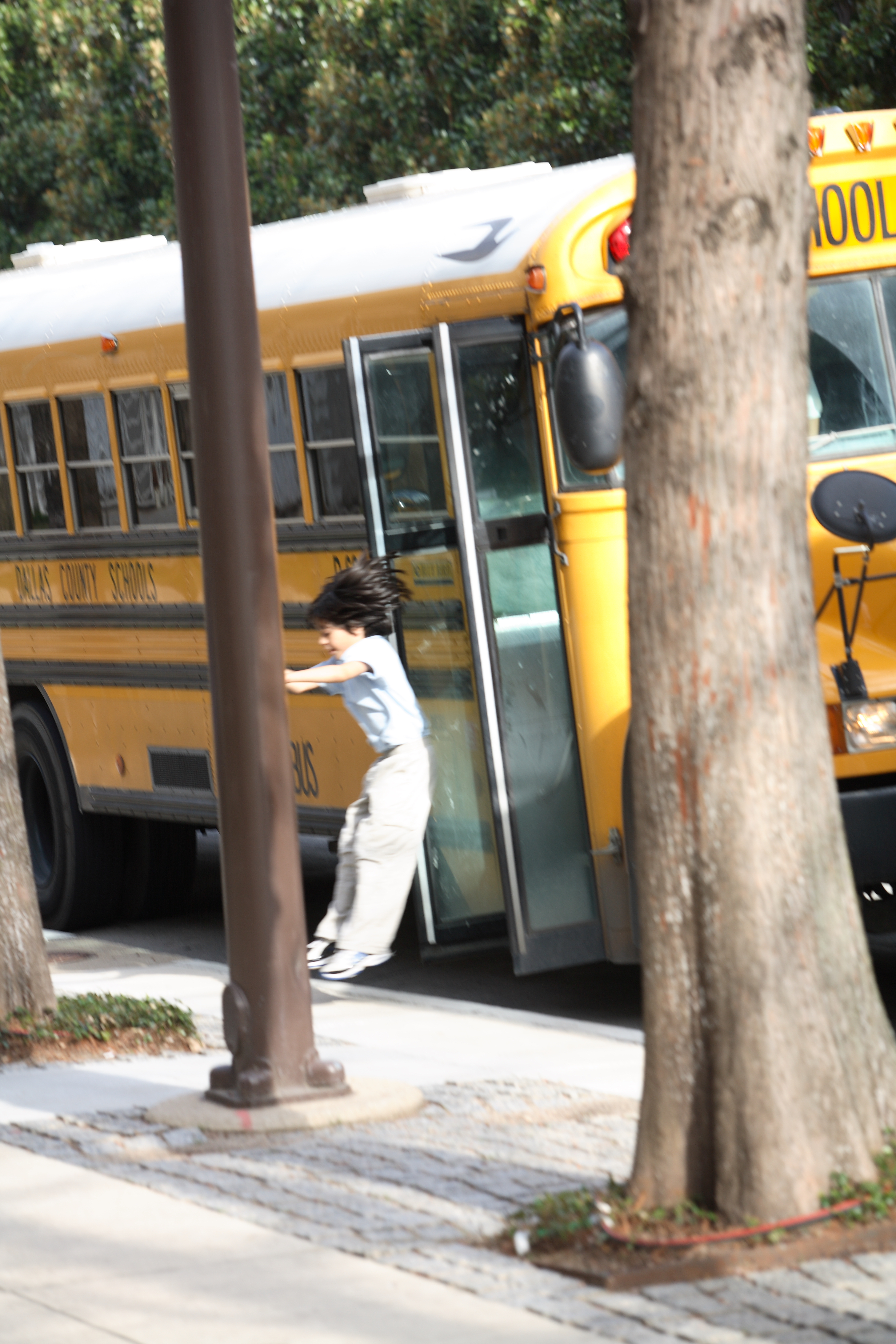
An excited 4th grader hops off the bus
First, you’ll be greeted by one of our fabulous docents. This docent will chat with you to make sure that you’re broken up into smaller groups (we assign one docent for every fifteen students), and s/he will match you up with the docents for your tour. Once your tour is under way, you should expect to see five to six works of art in a one hour tour. We emphasize quality over quantity–we believe your students will gain more from in-depth experiences with a limited number of works than they would from trying to see twenty works of art in one hour. If you would like your students to see more paintings and sculptures while they are here, consider scheduling a self-guided visit after your tour. That’s a great way for your students to be able to go back and look at works of art that are most interesting to them.
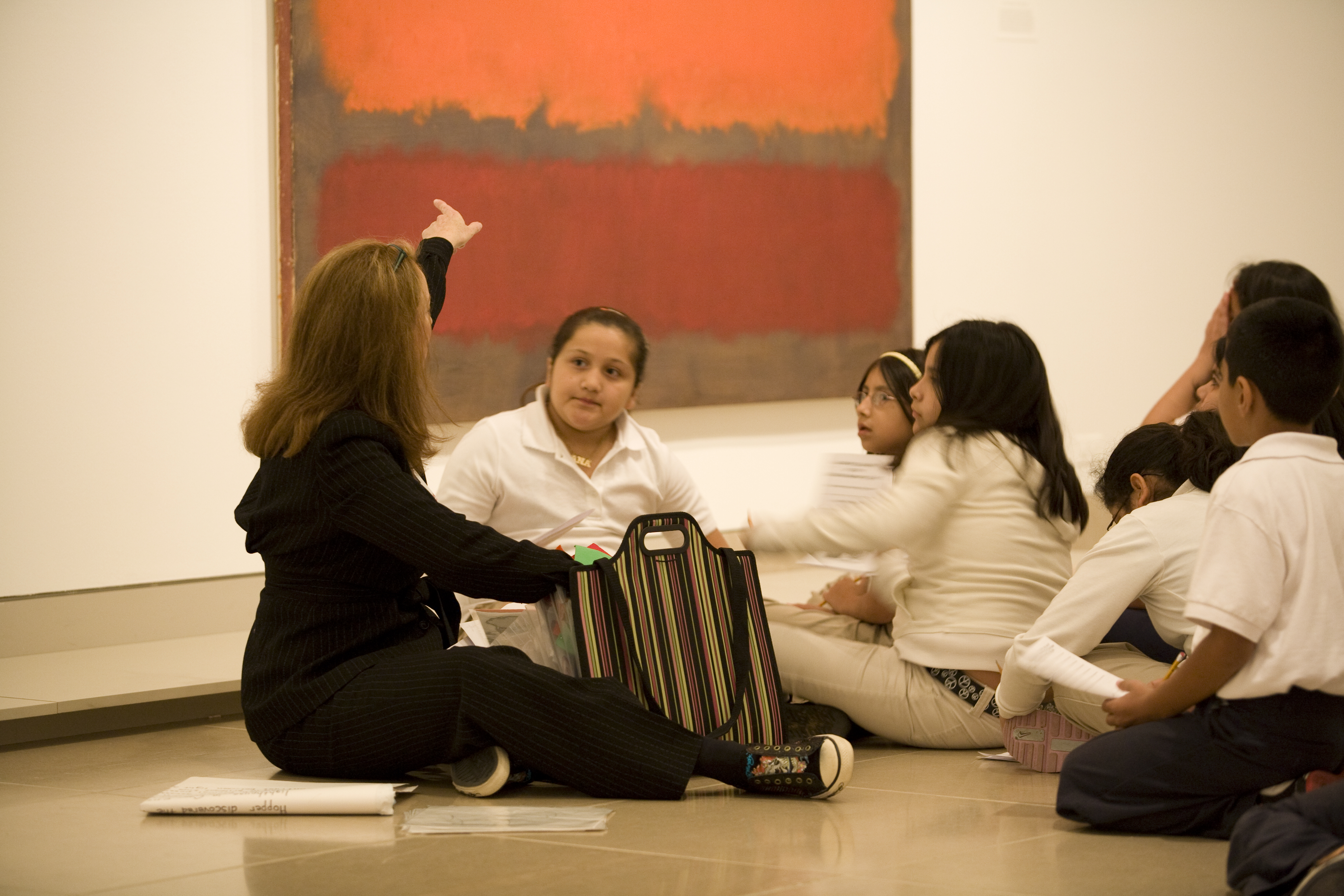
Discussing Mark Rothko's Orange, Red, and Red
Three years ago, we created a program goal for K-12 docent-guided tours. Our goal states:
- On docent-guided tours, students will experience the Museum as a comfortable place to visit and return to, discover that works of art are relevant to their lives, and begin to see their world in a fresh way.
How does that happen in the galleries? First off, your docents will welcome you to the Museum and learn a little bit about your group and what you have been studying. They’ll discuss the guidelines for a Museum visit, and also present a theme for your tour. At each stop, they will ask your students to look closely at the work of art. They might use open-ended questions to ask the group what they see, and they’ll hopefully ask them to share visual evidence for their ideas. We use questions and conversations to encourage closely looking, rather than a lecture-based teaching method.
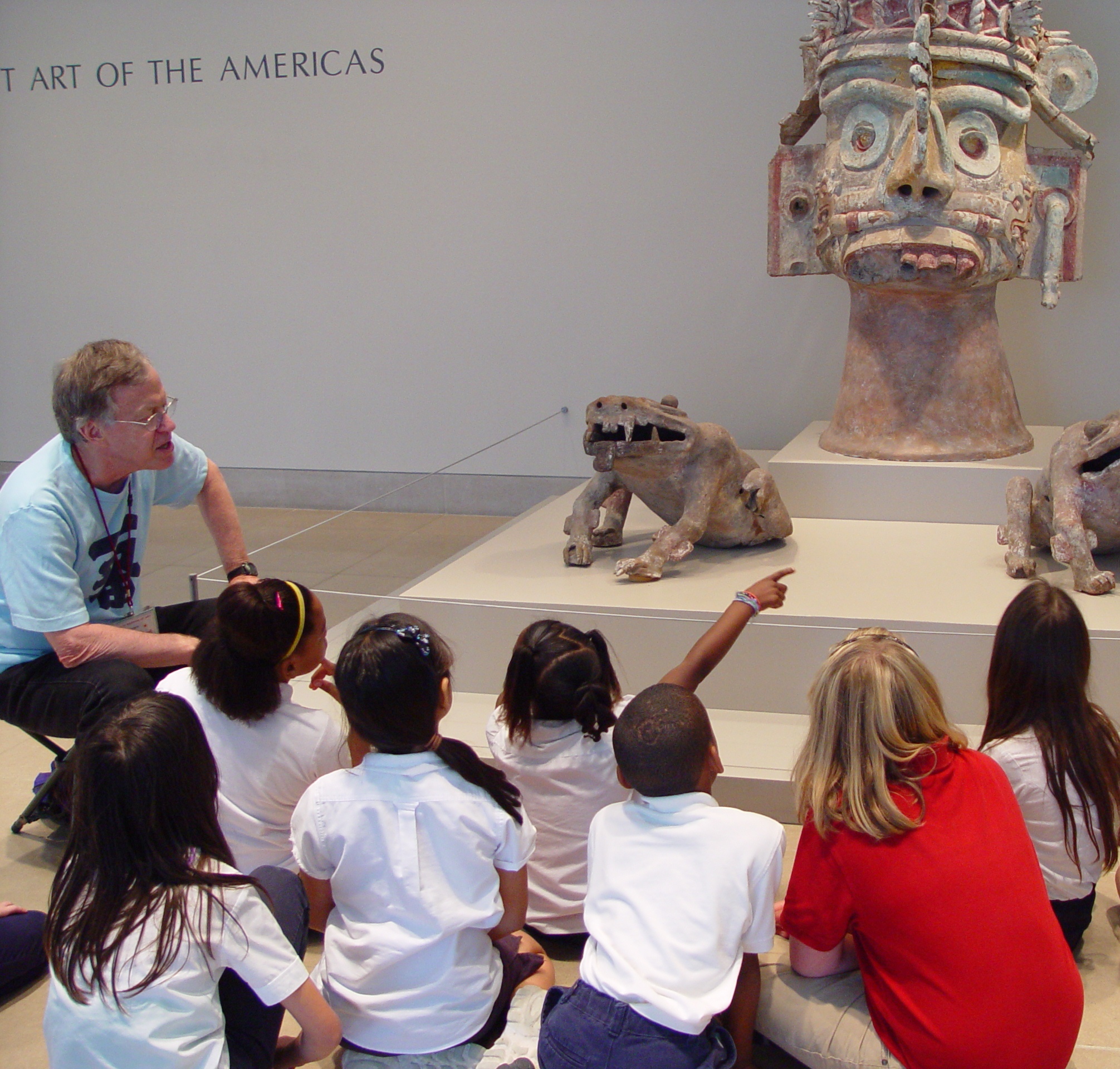
A docent helps students look for clues that tell us about Tlaloc
We also know that everyone learns in different ways, and docents are encouraged to think about addressing multiple learning styles over the course of their tour. Your students might be asked to write a short poem, act out a pose or gesture, or even sketch in the galleries. Each of these activities focuses their attention and allows them to look closely to make sense of the works of art in the Museum.
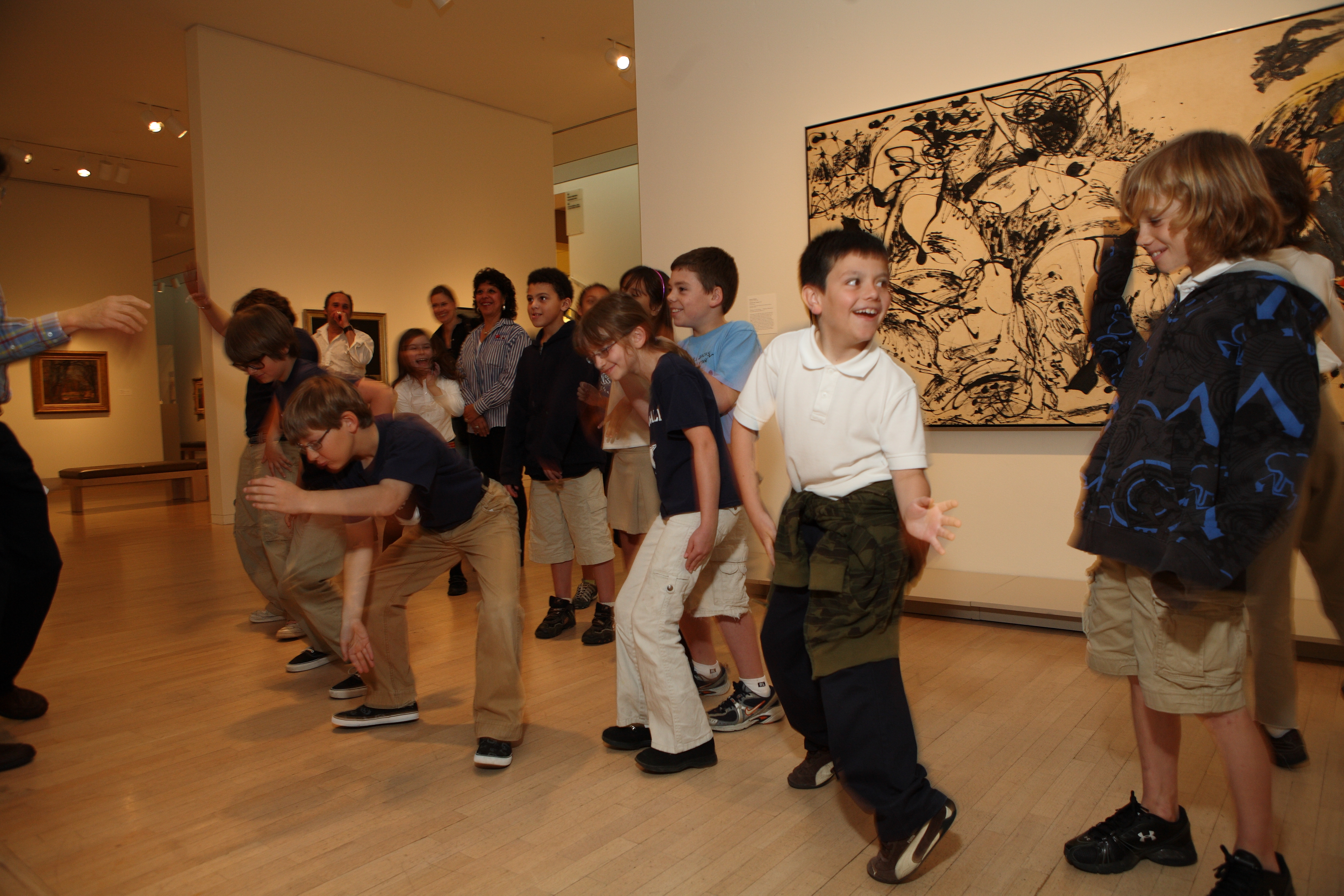
Students move their bodies like the lines in a painting
We want students to begin to experience a sense of wonder while they are at the Museum, and that can happen in many ways on a docent-guided tour. Some students experience wonder the minute they step through the door and see the Barrel Vault space for the first time. Others ask questions about works of art, make connections between works of art, or say things like “I never knew that.” One way that docents can help facilitate that sense of wonder is by giving students time to look and reflect on their own. And of course, listening and responding positively to your students’ ideas is a great way to promote that sense of wonder, as well!

Students are asked to arrange colors in response to an abstract painting.
The final element of a docent-guided tour at the DMA is helping students see that works of art–whether they were made 2,000 years ago or two years ago–are relevant to their lives today. How is a bed made in 1844 similar to the beds we sleep in? What is different about it? What type of bed would you love to have in your house? These are just some of the questions docents might ask students when discussing this work of art in our galleries. We want students to make a personal connection while they are at the Museum, and it is our hope that these connections will turn your students into lifelong Museum goers.
We end all of our tours by inviting students to come back to the DMA often. I hope that this gives you a sense of what happens on a typical docent-guided tours, and that you’ll bring your students to visit us soon!
Shannon Karol
Manager of Docent Programs and Gallery Teaching


